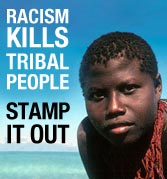
Published Date: 19 May 2008
By Fred Bridgland
in Johannesburg
IT BEGAN just over a week ago at a discussion in a poor township about crime. By yesterday, it had become a black-on-black ethnic-cleansing frenzy that engulfed central Johannesburg, taking more than a dozen lives and leaving hundreds injured, thousands homeless and many raped.
The assaults by poor black South Africans on poor, terrified refugees, most of them Zimbabwean, is a crisis that has been waiting to happen for months and seems likely to escalate.
Reports yesterday said the attacks had spread to Cape Town, Durban, Port Elizabeth and Pretoria.
Some three million Zimbabweans have fled to South Africa from the political and economic terror waged by president Robert Mugabe. They have been joined by an estimated one to two million economic migrants from Mozambique and Malawi. In a country with 40 per cent unemployment, ordinary black South Africans have accused the foreigners of stealing their jobs, houses and women. And they have been growing increasingly angry with their own head of state, President Thabo Mbeki, accusing him of being more concerned with appeasing Mr Mugabe than recognising the scale of the problem caused by the flood of Zimbabweans into South Africa.
Eight days ago, in Alexandra, a poor township in the shadow of Johannesburg's business district and the richest square mile of earth in Africa, Jacob Ntuli, 67, a community leader and former security guard, called a meeting of residents to discuss the rape of four women and a girl.
Somehow, what began as a discussion about crime ended in people seething with anger about foreigners. They decided it was time to act, and soon, with cries of "Let's go and kill foreigners", a mob armed with guns, steel bars and whips was descending on non-South African homes.
The first to die was Sipho Madondo, a 41-year-old South African who refused the mob's demand that he join the planned killing spree. He was shot dead in front of his wife, Pretty.
Soon afterwards the first Zimbabwean died. Lungile Mtweni, 31, had just arrived jobless from his own country and was due to begin work the next day as a gardener for a white South African in the hope of providing for his wife and two children. He had borrowed the equivalent of 65p from a neighbour so he could travel to his job and was walking home when he was overwhelmed by the mob. After hearing his accent, they beat and stoned him to death, before moving on to loot and burn the homes of other foreigners.
Hundreds of foreigners fled Alexandra as they were attacked and their homes set alight. Some deadly genie had been let out of the bottle. Copycat attacks began in other townships and settlements – Tembisa, Katlehong, Reiger Park, Thokoza, Jeppestown, parts of the giant township of Soweto, names familiar from the violence that marked the 1989-1994 transition from apartheid to democracy.
Yesterday at least seven foreigners were burned or hacked to death in Johannesburg and mobs besieged the Central Methodist Church, which Bishop Paul Verryn has turned into a shelter for hundreds of Zimbabwean exiles. With violence erupting in so many places, police were struggling to maintain control.
The victims of the violence are dishevelled and dirty, sleeping in their thousands, huddled together in police compounds, the car parks of hospitals where their loved ones lie wounded, in churches and on waste ground.
One Zimbabwean said he didn't know what to do – return to unbearable poverty in his homeland or stay in South Africa, where it was beginning to look like he faced certain death.
Poor blacks pay the price for Mbeki's dithering over ZimbabweFred Bridgland reports on the refugee crisis that is pitting black against black in South Africa's townships
I HOPE my gardener, George, has survived Johannesburg's pogroms unscathed. George is a Malawian, but I confess I don't know enough about him because he is actually employed and paid by my landlady. He is precisely the kind of person being targeted by black South African mobs, who accuse migrants from Zimbabwe, in particular, and from Malawi and Mozambique, of taking their jobs because they are willing to accept lower wages.
Read the rest of the story
Here


















